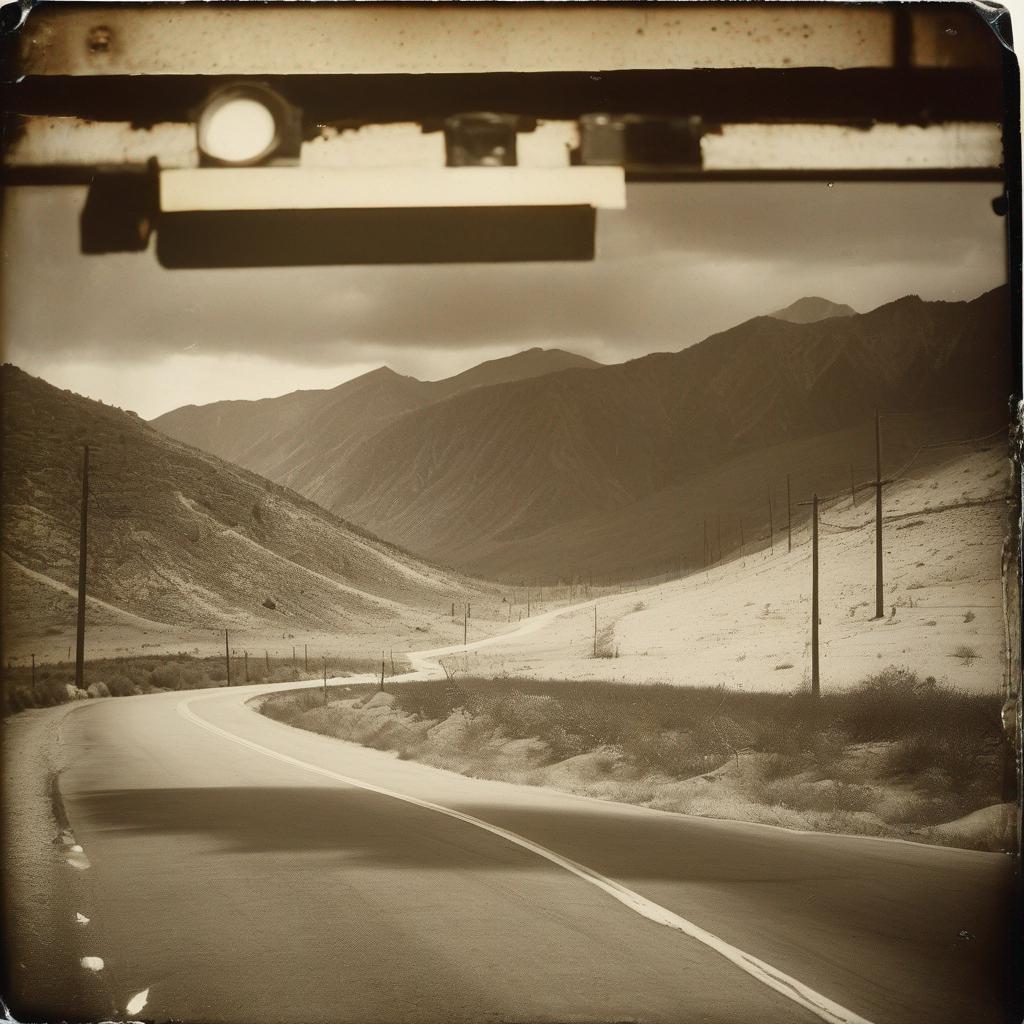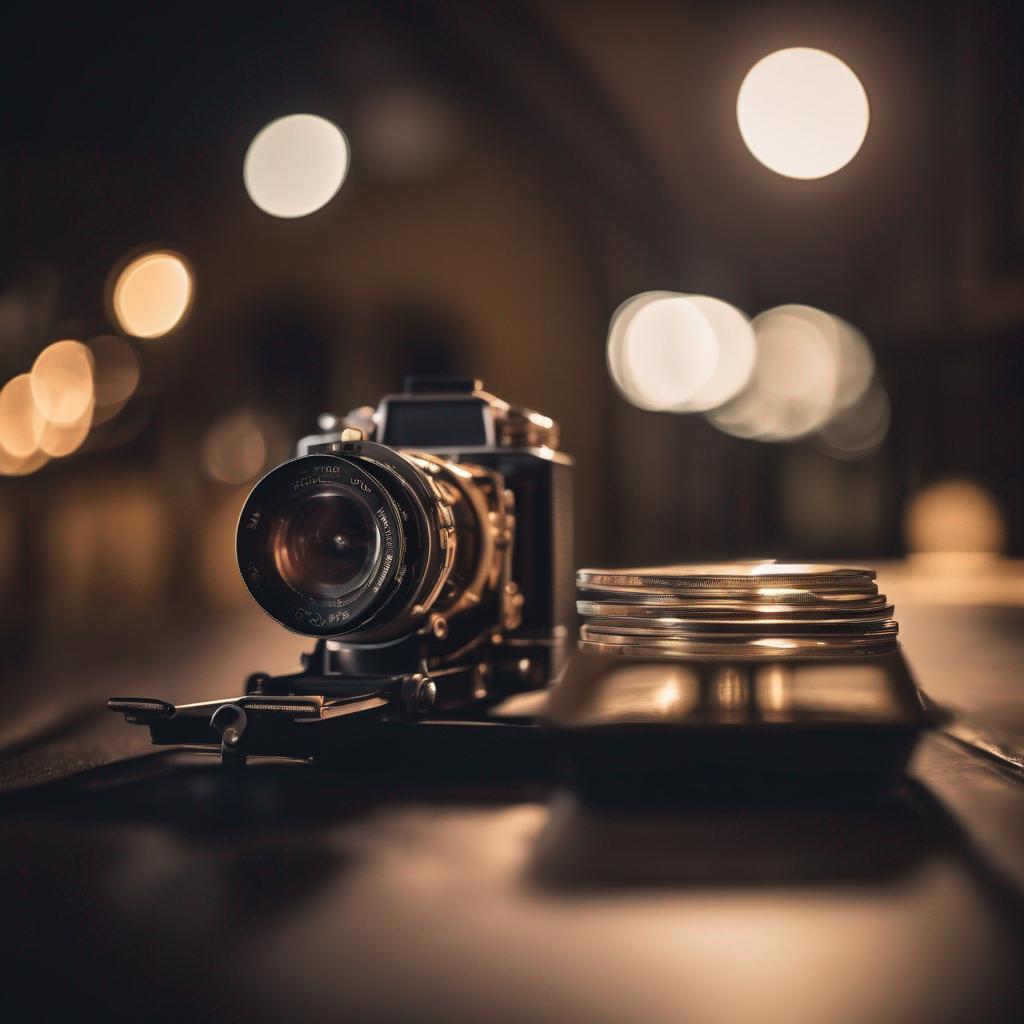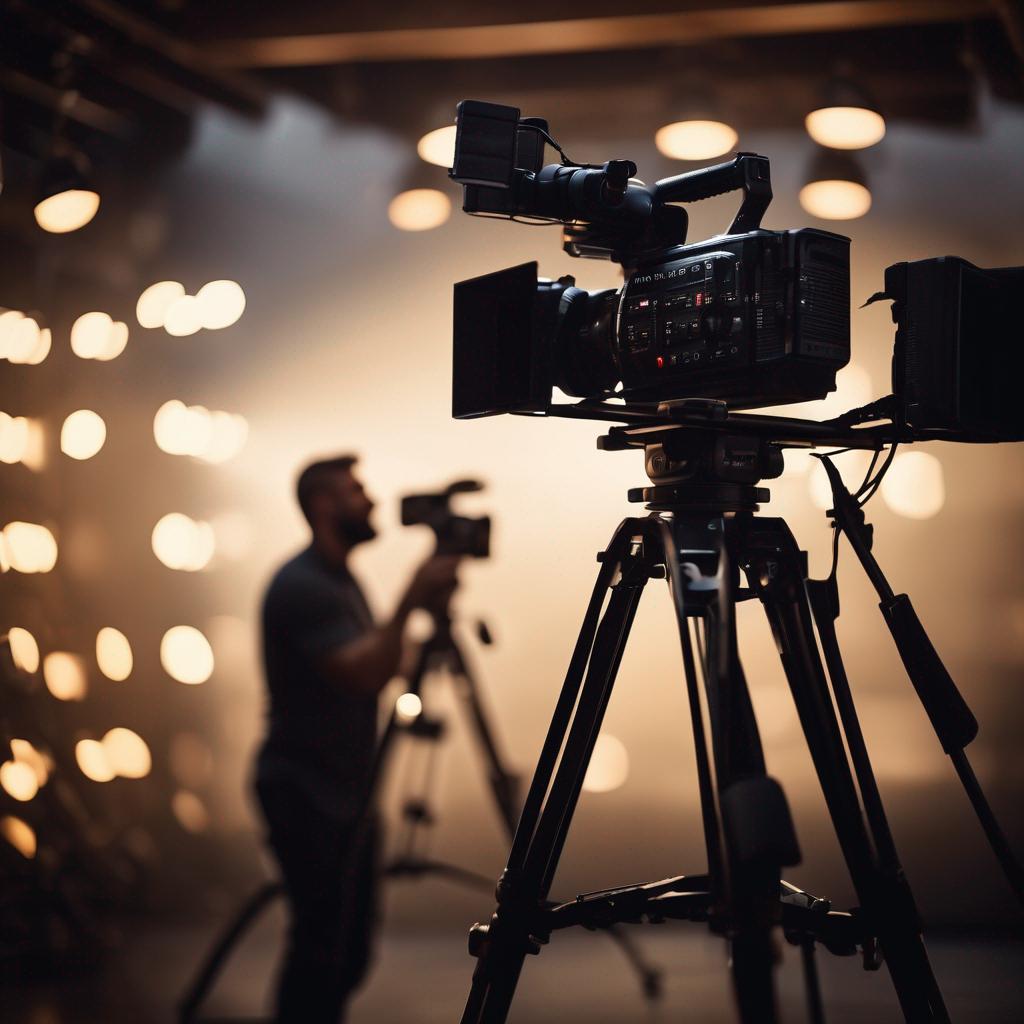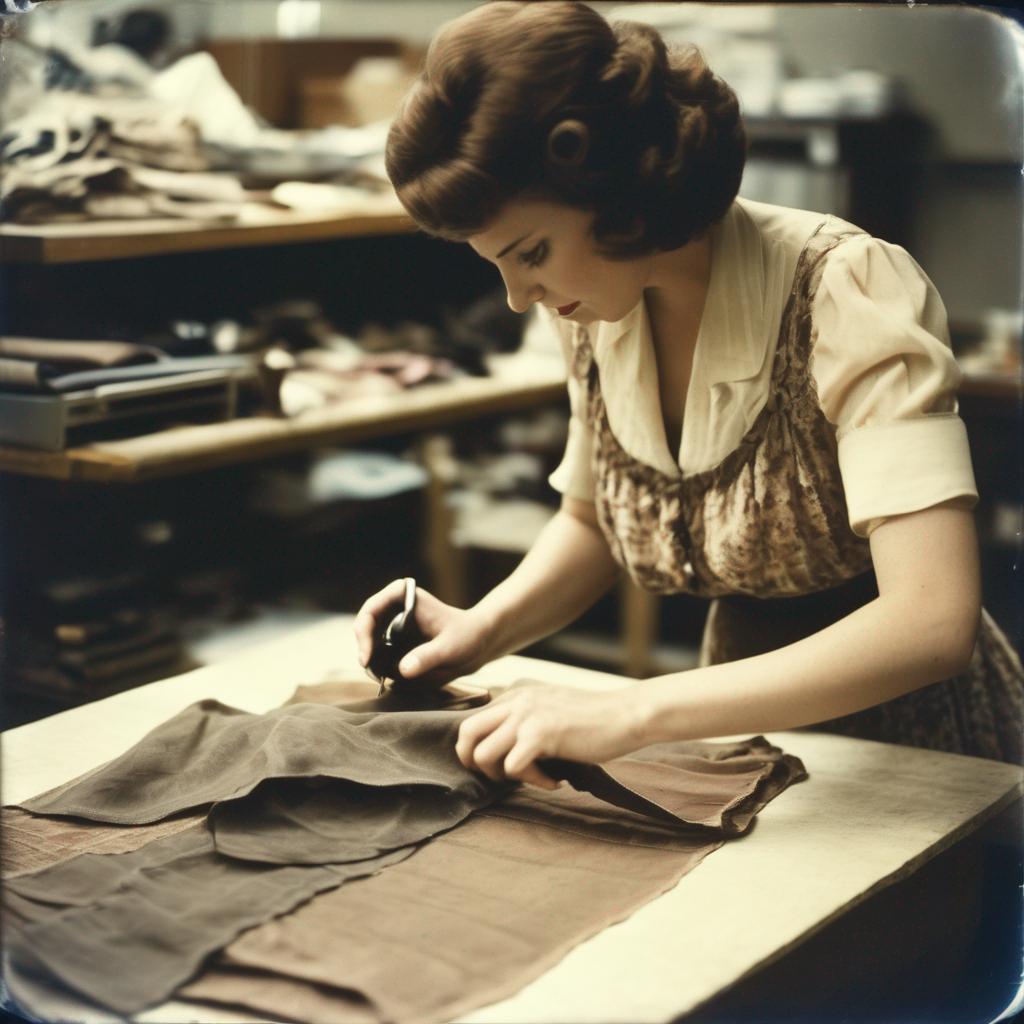The Filmmaking Process for DIY Filmmakers

Embarking on the journey of DIY filmmaking can be an exciting yet daunting endeavor with its multitude of moving parts. This introduction provides a broad overview of the entire filmmaking process, laying critical groundwork for anyone venturing into self-made cinema. Our discussion navigates through each phase of DIY filmmaking, including pre-production planning, field-tested guidelines on screenwriting, and unraveling the art of direction. We'll delve into essential camera techniques and touch on the significance of balancing light and sound to create the perfect atmosphere. Realistic costumes and props, stunts, action sequences, and post-production tasks are equally integral elements. We'll venture into the key strategies for marketing and distribution, all the while emphasizing the importance of critical feedback. Essentially, this blog post is designed to arm you with an expansive understanding of the filmmaking process and equip you with vital tools needed for a successful DIY film project.
Starting the Filmmaking Process: Pre-Production

Embarking on the filmmaking journey begins with critical pre-production steps. It's during this initial phase where basic foundations are laid that will dictate the viability and success of your do-it-yourself (DIY) film project. This involves careful planning and organization. You'll need to develop a detailed budget reflecting every facet of the production, from buying or renting equipment, paying your crew, securing locations, and even catering. Two Hollywood producers, Jane Fleming and Mark Ordesky, noted in their book “Pitch to Win” that “the slightest miscalculation or oversight in the budget can lead to sweeping setbacks and could possibly ground the project indefinitely.”
Understanding Screenwriting and Storyboarding
In the world of DIY filmmaking, understanding screenwriting and storyboarding is crucial to creating a successful film. The art of screenwriting forms the backbone of any film project. It involves transforming creative ideas into a structured script, which acts as a guiding map throughout the filmmaking process. Renowned filmmaker Martin Scorsese once mentioned, "Cinema is a matter of what’s in the frame and what’s out...and it’s true in the script." Hence, highlighting the immense value of having a well-defined script.
An effectively written script precisely delineates all elements of the narrative, including the dialogues, characters, and plot. For instance, in the iconic movie "The Godfather", screenwriter Mario Puzo intricately developed the characters and plotline, which resulted in a theater masterpiece. The screenplay provides the creative backbone to the film and aids all members of the production team in visualizing the narrative in synchrony.
Elaborating further on the visualization process, storyboarding plays an instrumental role. Essentially, storyboarding acts as the cinematic translation of the script. Filmmakers such as Alfred Hitchcock were proponents of detailed storyboarding, stating that "to make a great film, you need three things: the script, the script, and the script." Through drawing or graphical representation, storyboarding presents the script scene by scene, showcasing camera angles, scene transitions, and character movements. A great example of the importance of storyboarding can be seen in the creation of the heart-wrenching montage in the movie "Up". Pixar artists spent weeks to storyboard every minute detail, ensuring that the sequence would strike the right emotional chord with the audience. To summarize, understanding and mastering screenwriting and storyboarding is paramount to setting the stage for a successful DIY filmmaking journey.
Smooth Hunting: Finding the Perfect Cast
When it comes to filmmaking, one of the most critical aspects is selecting the perfect cast. Understanding each role thoroughly in your script along with character requirements would significantly impact your casting choices. It is important to remember that talented actors can bring your characters to life in ways you might not have necessarily envisioned initially and can elevate the overall quality of your film.
It is not uncommon for DIY filmmakers to assume that a more famous actor or actress will automatically equate to a better fit for a role. However, suitability for a role should take precedence. For example, consider a scenario where you're casting for the role of a mellow vagabond, a better-known actor known predominantly for fast-paced action flicks might not be the best fit. Instead, a lesser-known actor who has had experience in roles demanding subtle performances may be an ideal choice.
Having auditions can be a great way to unearth hidden talent. Don't underestimate the potential of newcomers; acting schools are brimming with potential stars waiting for their break. For instance, Hollywood directors like Martin Scorsese and Quentin Tarantino are renowned for casting lesser-known actors who have proven their mettle in auditions.
In essence, choosing your cast should be a thorough process that balances talent, suitability, and even script requirements. Casting is more than just filling roles; it's about enhancing the vision of your film with the perfect ensemble. Always keep an open mind, be patient, and weigh all factors judiciously. Remember, your cast will help drives the narrative of your film, so the effort is worthwhile!
Decoding Film Equipment for DIY Filmmakers

Diving into the details of film equipment is paramount for DIY filmmakers to craft a high-quality project. You don't need to break the bank for top-of-the-line gear; instead, prioritize being cost-efficient yet effective. For example, invest in cameras that provide good quality but are within your budget range like Canon's Rebel T3i or Panasonic's Lumix GH5. Remember, extraordinary filmmaking abilities can compensate for camera limitations to a significant extent.
Next, consider getting solid audio recording equipment. A Rode VideoMic Pro or Tascam's line of portable audio recorders are great choices for indie filmmakers. They record exceptional quality audio without much setup fuss or post-production requirements. Using poor audio equipment can seriously downgrade the audience's perception of your movie, no matter how visually breathtaking it is.
Lighting, an often overlooked element, creates visual depth and mood, both of which are quintessential for storytelling. A decent set of lights such as Aputure's AL-M9 or Neewer's Bi-Color 660 LED kit would be budget-friendly but effective options. Having reflectors or diffusers on hand can also bring a rich touch to the images you are capturing.
Supporting equipment, like tripods, gimbal stabilizers, or a slider, significantly improve the camera movements for better cinematic shots. Brands like Manfrotto provide a wide variety of fluid head tripods for a stable base while creating pan or tilt movements.
Finally, being a DIY filmmaker may sometimes require improvisation and experimenting with DIY tools or hacks. Whether it's creating a makeshift camera dolly using a wheelbarrow or using household materials for a lighting rig, it's all part of the trade that empowers filmmakers to be imaginative and resourceful, without having to spend excessively.
Tips to Secure Ideal Filming Locations
Securing an ideal filming location is essential in DIY filmmaking, and there are crucial factors that you need to consider to achieve this. First, you need to take into account the setting and environment been depicted in your script. For instance, if your script describes a serene, coastal town, scouting for locations near the sea with quaint buildings could be an optimal choice.
However, finding the perfect location doesn't stop at the attractiveness or suitability to the script. Practicality matters. Ensure the availability of necessary amenities such as electricity for lighting, sufficient space for your cast and crew, and parking facilities. Filming in remote locations may seem enticing, but without the proper facilities, it could become a logistical nightmare.
Most importantly, you need to acquire proper permissions and licenses to avoid any legal hurdles during your shoot. Reach out to local governance bodies or property owners to obtain necessary permissions for your intended location. There might be a fee associated with this, so ensure to budget for it in your pre-production planning.
Remember; don't let the challenges of securing a location discourage you. Hollywood Director Steven Spielberg once said, "Filming is all about problem-solving." If your ideal location is not feasible, consider alternatives such as a studio setup or green screen technology that you can transform in post-production. Assessing these factors judiciously will ensure you’re shooting in a location well-matched to your script, budget and logistical capabilities.
Rolling Into Production: On-Set Practices
Once the pre-production phase is completed, it's time for the actual magic to happen in the form of production. One of the crucial aspects of this phase involves laying down set rules and establishing efficient practices for a smooth shooting experience. The adherence to a well-structured set of practices yields consistency while filming. For instance, keeping a well-organized shooting schedule can help avoid confusion and promote time-efficient filming. Sharing a detail-oriented shooting schedule with the entire crew ensures everyone is on the same page, reducing the chance of miscommunication.
An efficiently run set aims at having minimal interruptions, which can be achieved by creating a respectful and professional working environment. For example, quiet on the set during takes, no cell phone usage, etc. Fostering such an environment requires clear communication from the director or the assistant director. The enforcement of these rules helps to maintain the focus of the entire team, ultimately resulting in high-quality footage.
Last but not least, safety should always be a top priority during the production phase. Safe practices include enforcing protocols such as regular equipment checks and providing appropriate safety gear when necessary. For instance, before any stunt or physical scene, it is essential to ensure all safety measures are in place to prevent any accidents. Also crucial is adhering to safety guidelines when shooting in various weather conditions or tricky locations. Remember, a safe set is a productive set. By focusing on these key areas, filmmakers can ensure a smooth production process and elevate the overall quality of their final product.
The Art and Science of Film Direction

The director serves as both the captain and the orchestrator, shouldering the immense responsibility of steering the ship towards its final destination - the completed film. This person is the creative and logistical lynchpin, making critical decisions that shape the film and, importantly, managing the entire filmmaking team. These tasks require exceptional skills in communication and decision-making. For example, a director must navigate numerous challenges such as modifying the script on a shooting day due to sudden weather changes or dealing with conflicts between team members. Much like a maestro leads an orchestra, it's the director who ensures harmony between all elements, integrating them into a cohesive unit.
In truth, film direction is as much an art as it is a science, balancing the creative vision with the pragmatics of filmmaking. Renowned director Quentin Tarantino once said, “When I'm making a film, I'm the audience,” underlining the director's role in ensuring the final product resonates with viewers. To illustrate, a director's choices in camera lenses, shot composition, and actor performances all contribute to how a scene feels to an audience. This is why the director's vision and leadership extend beyond just managing the team - they reach into every corner of the production, playing a substantial role in the film’s ultimate success or failure.
Crucial Camera Techniques for Quality Shots
Understanding and mastering crucial camera techniques can greatly enhance the quality of the shots. Proper utilization of the camera goes a long way towards achieving the envisioned picture quality and does not necessarily require high-end equipment. For instance, the 'Rule of Thirds,' a basic photography principle, helps balance the frame and make the shot visually appealing. It involves dividing an image into nine equally-sized sections and then placing the integral elements along those lines or intersections, which naturally attracts viewers' eyes and establishes a sense of balance. Different shot types, whether it be a wide shot, medium shot, or close-up, offer various perspectives and add depth to the narrative. Also, understanding camera movements like panning, tilting, or dolly zoom can deliver dynamic visuals and create a compelling storytelling experience. For instance, director Steven Spielberg's famous dolly zoom effect in 'Jaws' heightened the suspense and drama. Moreover, learning how to manage focus and exposure can enhance image quality and adjust mood, an expertise legendary cinematographer Roger Deakins often employs. Understanding these camera techniques is foundational to achieving quality shots and crafting a captivating visual storytelling experience.
Managing Light and Sound in Filmmaking
The mastery of light and sound can greatly impact the mood and atmosphere of any film. This is a fundamental concept which DIY filmmakers should consider when seeking to produce a professional quality film. The right lighting allows you to create specific atmospheres and highlight important elements within your scenes. For example, low key lighting, characterized by intense shadows and a high contrast between light and dark, can create a sense of mystery or suspense. Conversely, high key lighting creates a bright, flat visual effect, reducing shadows and contrasts to yield a more cheerful or neutral mood. Each lighting decision contributes to the film’s overall narrative and aesthetic.
Sound, on the other hand, plays a distinct yet parallel role. The best films capitalize on the power of sounds, whether it's dialogue, background noises or a stirring score to elicit emotions from the audience. High-quality audio recording equipment is essential during shoots to capture crisp, clear, and natural sounds. Using poor quality audio can distract viewers and spoil the cinematic experience. Furthermore, the sound design during post-production, which includes sound effects, Foley, and musical score, can elevate scenes to new heights. For instance, the blaring trumpets in a dramatic movie climax or the soft pitter-patter of rain in a melancholic scene. Meticulous attention to the light and sound aspects cultivates the climate of your film, leaving a lasting impression on audiences.
Production Essentials: Costumes, Makeup, and Props

Costumes, makeup, and props are some of the most visually engaging elements in a film, contributing significantly to its realism and impressionistic appeal. Using the right costume for a character, matching their persona, can dramatically enhance the story and the audience’s connection to it. For instance, in the film "The Great Gatsby," the 1920s inspired costumes not only captured the film's era, but also represented characters' status and personalities. Therefore, it's important for DIY filmmakers to invest in appropriate costume design, either by sourcing from local theaters, thrift stores, or hiring a costume designer.
Moreover, makeup plays a crucial role in transforming actors into their characters, going beyond simple vanity applications. It helps to emphasize emotions, create special effects, or signify time and cultural settings. For example, the use of prosthetics and flesh-colored makeup in "The Curious Case of Benjamin Button" aged Brad Pitt's character backward, integral to the film's plot. Considering this, filmmakers can experiment with homemade materials or engage freelance makeup artists to make characters come to life.
Lastly, props provide context, portray the cultural or historical background, and may also be pivotal plot elements. For example, the Ring in "The Lord of the Rings" serves as a critical device driving the story forward. Prop sourcing can be a fun endeavor for filmmakers, searching through flea markets or garage sales, ensuring each prop selected aligns with the film's setting, characters and storyline. Therefore, incorporating convincing costumes, effective makeup, and meaningful props in a project is of paramount importance, even for DIY filmmakers, as it enriches the narrative, enhances visual appeal, and elicits a stronger viewer response.
Loremaker's Guide to Stunts and Action Sequences
When it comes to involving stunts and action sequences in your DIY film, it's crucial to execute them both safely and convincingly. It's not simply about capturing visually stunning shots; the sequences must also be realistic and enhance the narrative. Engaging specialists, either those versed in choreographing fight scenes or professional stunt coordinators, can add authenticity to the film and ensure physical sequences are performed safely.
Of course, not all DIY filmmakers have the budget for a professional team. In this case, it becomes a matter of careful planning and acute attention to detail. Learning from online resources and following safety precautions can help you conduct minor stunts without risking anyone's well-being. It's also helpful to study action sequences from the films you admire. Understanding the camera angles, editing style, and the rhythm of the scene can lend inspiration to your own project.
Technology has made it possible for DIY filmmakers to replicate high-budget action scenes on a tight budget. Consider using digital effects, such as editing software to slow down or speed up sequences, or layer sounds to create more intense moments. Remember, safety must never be compromised for spectacle - if a stunt feels too dangerous, find a creative workaround. Both digital and practical effects can produce successful results.
Practicing the stunts several times before the final take will ensure every moment is captured as intimately as possible. If using actors for these sequences, perform 'walkthroughs' to ensure they're comfortable with what's expected. Film each stunt from different angles, so you have plenty of footage to work with during editing. Remember, the goal of incorporating stunts and action sequences is to elevate the film's narrative, not overshadow it.
Editing Film: An Art and Skill
Editing film is both an art and a skill, with its own set of strategies that can transform raw footage into a compelling narrative. This critical post-production activity requires a keen eye, technical proficiency, and a deep understanding of the director's vision. Professional editors like Thelma Schoonmaker, who has edited all of Martin Scorsese's films since "Raging Bull," understand the tremendous narrative power they hold in shaping a film's final cut. Indeed, Scorsese once said, "She's the one who has made the movies better."
Talented editors know that they aren't just cutting out unnecessary scenes or stitching different shots together. They are, in fact, sculpting the film's rhythm and pacing, adding tension or fun at strategic points to keep the audience engaged. The sequence of shots in the beginning of Quentin Tarantino's "Pulp Fiction" has been cited often as a paragon of effective editing. By arranging the shots innovatively, the film's linear storyline transformed into a non-linear, interconnected, and highly intriguing set of vignettes that, together, enhance the viewing experience.
Yet, the art of editing a film is not without its challenges. There’s understanding the power of omission—that delicate balance of what to leave in and what to remove to maintain the essence of the storyline. Frank Urioste's work in "Die Hard," for example, is an excellent instance of striking that balance perfectly, with its efficiently trimmed scenes adding momentum and an edge-of-the-seat thrills at every turn.
Lastly, technological tools employed during the editing process can enhance or dramatically alter the aesthetic of the final product. Cutting-edge software like Final Cut Pro or Avid Media Composer are staples in many editors' toolkits, enabling them to weave disparate shots into a visual masterpiece. It takes both creativity and technical proficiency to master these tools—proof that film editing is indeed an art cultivated through skill.
Understanding and Implementing Film Marketing
Marketing is an indispensable part of the film-making process, especially for DIY filmmakers who usually operate with limited resources. To gain visibility and reach the desired audience, effective marketing strategies need to be formulated and implemented. This can begin with identifying target demographics and tailoring ad campaigns to resonate with them. To get the word out about your film, utilize resources like social media and press releases, engaging the audience long before the movie's release.
The significance of film festivals can't be overlooked in the context of marketing. They offer the perfect platform to showcase your work, gain exposure, and potentially attract distributors' attention. In addition, developing intriguing marketing materials, such as movie posters, trailers, and promotional stills, can encourage word-of-mouth promotion and peak curiosity among potential audiences.
Film marketing also involves educating the viewer about why your film is unique and why they should watch it. This could be achieved through captivating storytelling in trailers or powerful performances in sneak peeks. So, be creative and innovative in presenting your film. A strong online presence can make a significant difference too, offering Q&A sessions with cast and crew, blogging frequently about the film's progress, or sharing behind-the-scenes footage can further engage and attract audiences to your film.
Filmmaking Process: DIY Distribution Strategies
Developing an effective strategy to distribute your film as a DIY filmmaker is an essential part of the filmmaking process. This stage involves researching and identifying the most suitable platforms to reach your target audience whilst maximizing your returns. For many filmmakers, online streaming platforms offer a wealth of opportunities. Platforms like Netflix, Amazon Prime, or Hulu are increasingly becoming popular outlets for independent filmmakers. However, acquiring a slot on these platforms can be competitive. It's paramount to pitch your film effectively, highlighting its unique selling points and potential viewer appeal. Ensure your trailer is compelling, high-quality, and shareable across social media to increase your chances of exposure and acceptance.
On the other hand, with the rise of mobile users, numerous DIY filmmakers are looking into short film distribution through social media platforms like YouTube, Vimeo, or even Instagram. These sites are optimal for targeting younger, digitally native audiences. For the untraditional route, consider hosting a private screening of your film, either in a hired venue or a local film festival. Screening at festivals can enhance your visibility, offer networking opportunities, and potentially catch the eye of distributors or production companies. Leverage digital marketing strategies such as Search Engine Optimization (SEO) for your website, targeted online advertising, email marketing, and partnerships with relevant influencers to further drive your distribution efforts.
Learning from Critique and Audience Feedback
Gleaning insights from critiques and responses from viewers can prove instrumental in enhancing future filmmaking endeavors. This essential step marks a learning curve as it often unfolds unexpected perspectives about one's own work. Never underestimate the value of the audience’s opinion as they represent the target market, and illuminating their preferences can help you tweak your approaches for success. For instance, a DIY filmmaker may receive feedback about an abrupt plot twist that seemed out of place to the audience, providing the director with a chance to reassess his storytelling technique in future projects. Similarly, technical feedback, such as comments on sound quality or lighting, is equally crucial as it can reveal overlooked aspects in production. Expert opinions are also valuable in this process. Experienced film critiques often provide in-depth insights into film techniques, narrative structures, and directorial decisions. Their opinions, though daunting sometimes, can encourage filmmakers to explore different directions and experiment with unconventional storytelling methods. As Confucius said, "By three methods we may learn wisdom: First, by reflection, which is noblest; Second, by imitation, which is easiest; and third by experience, which is the bitterest." Compiling and analyzing feedback systematically can significantly aid in sharpening a filmmaker's skills and vision. Remember, every critique is a stepping stone towards refined and compelling filmmaking.
